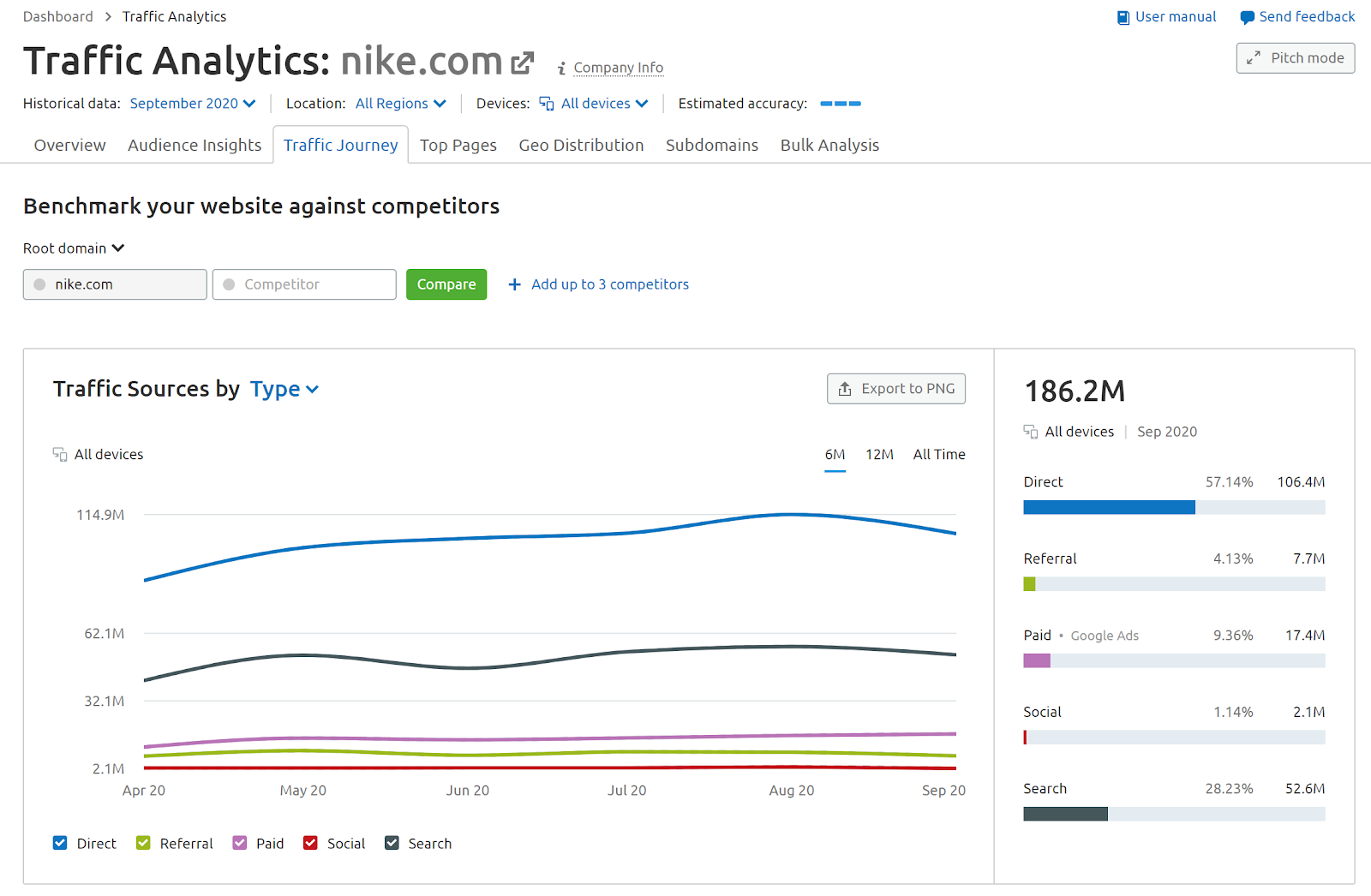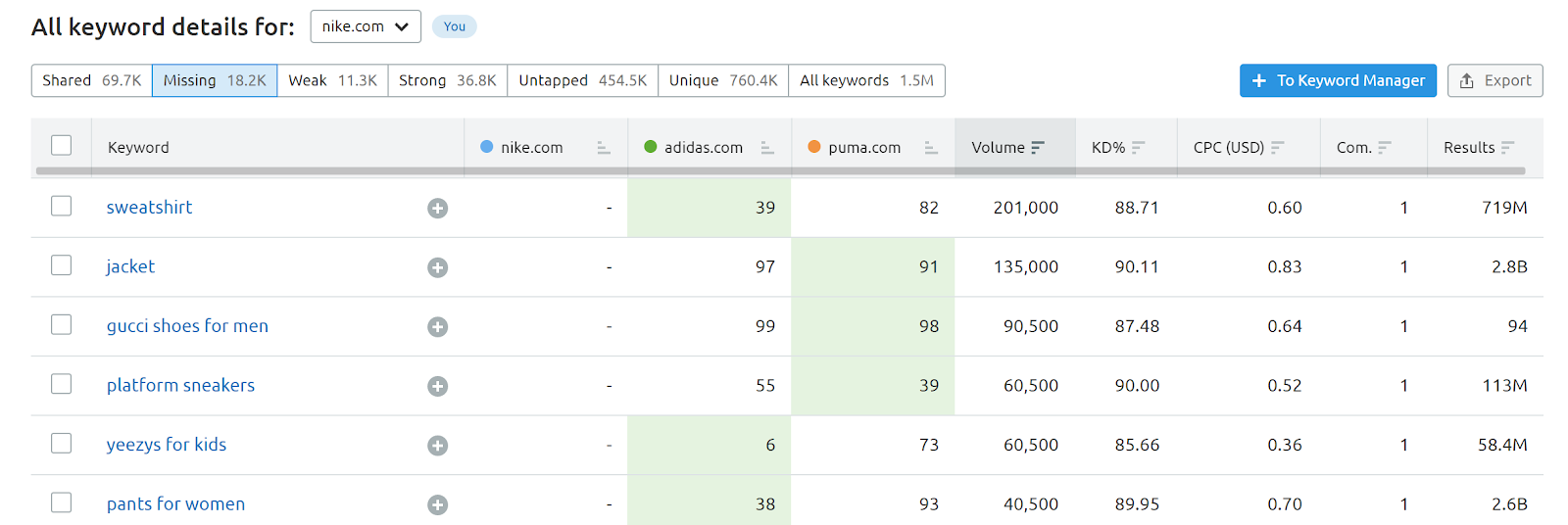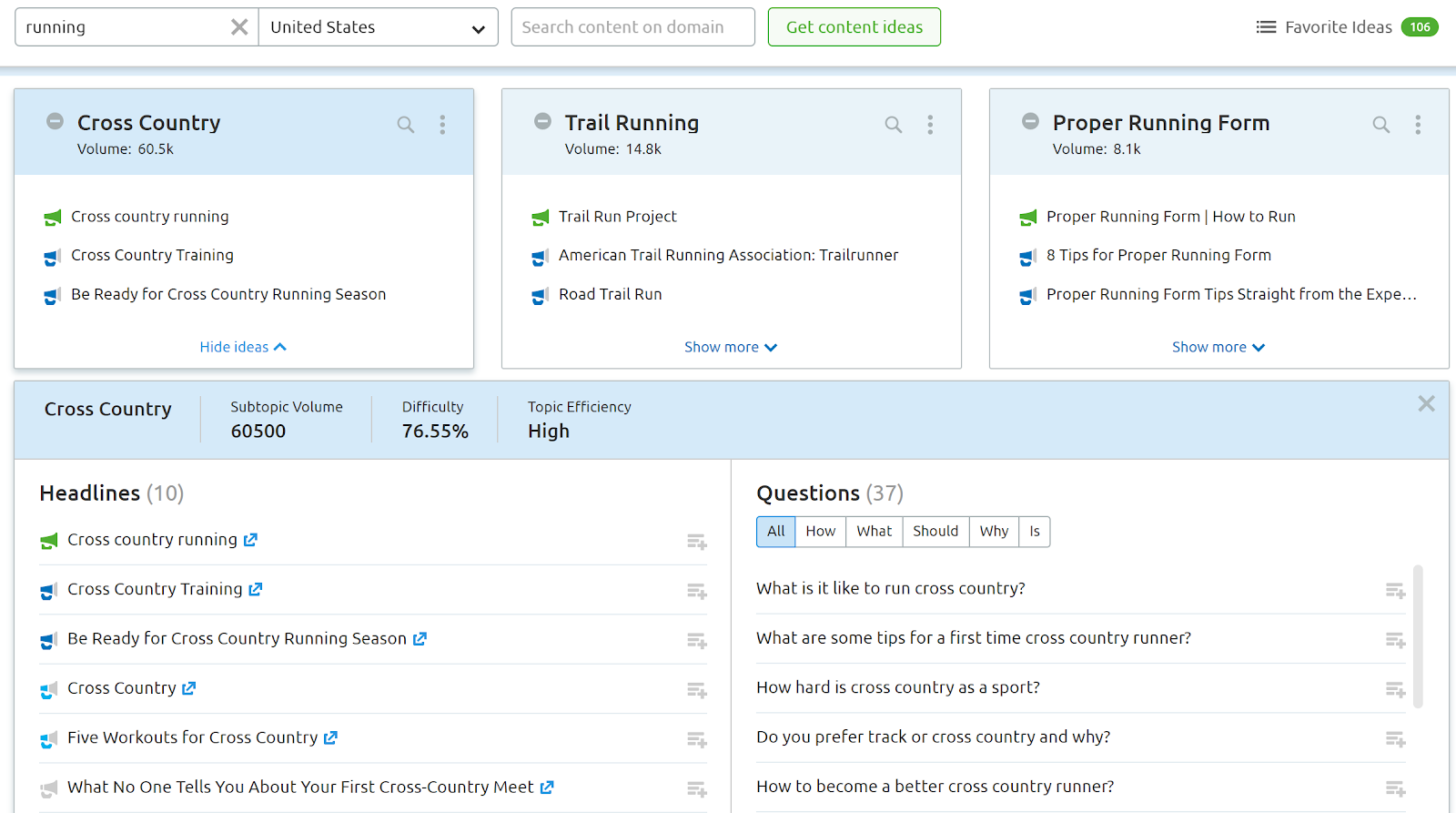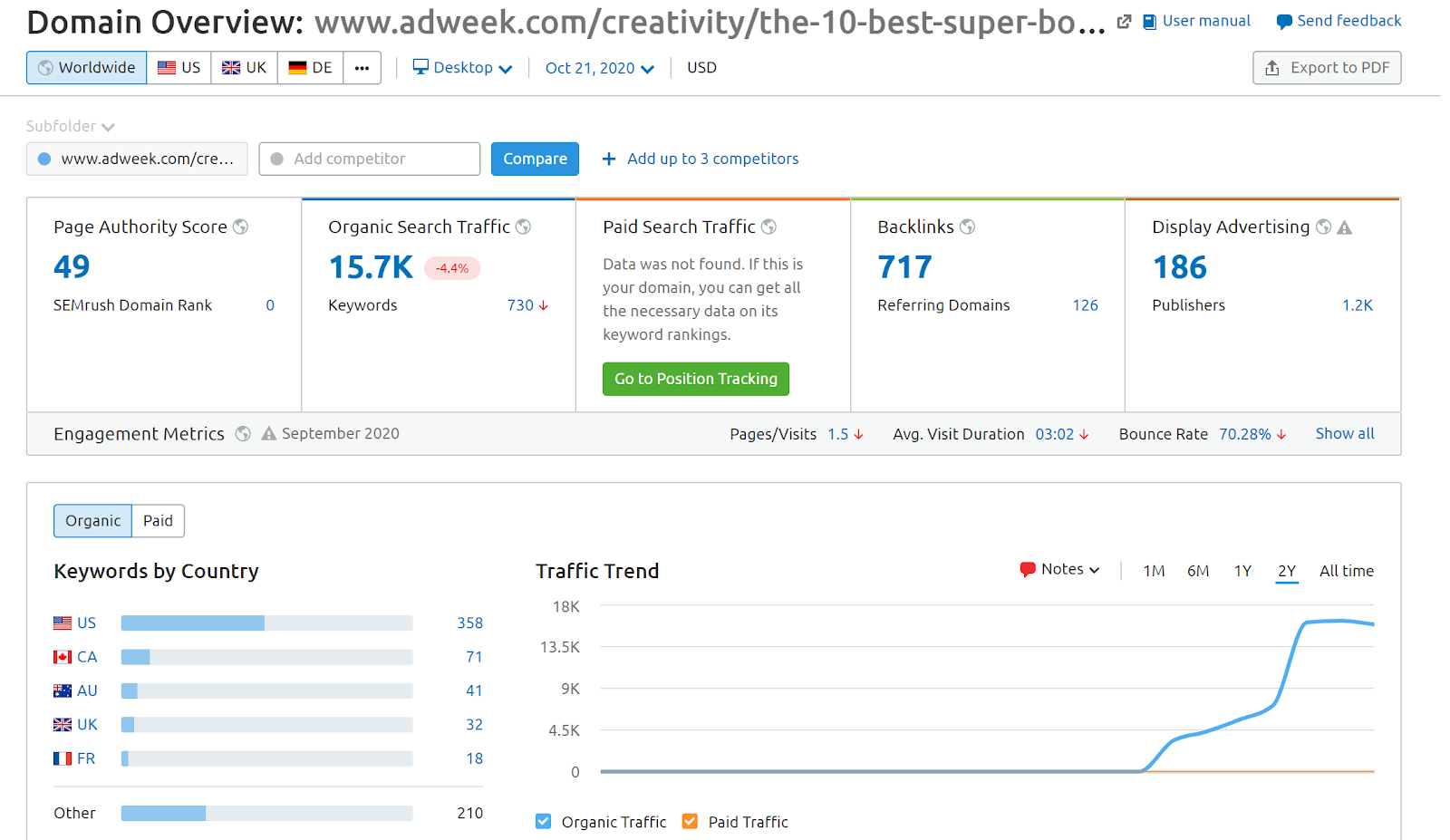Unless you live off the grid, you know the importance of content marketing in promoting ecommerce sites. However, the trouble is that some marketers have the attitude, “If I create content, they will come.” Unfortunately, it doesn’t work this way.
Content without strategy is just words, images, and videos thrown into the ether, becoming part of the general background noise and doing nothing particular for the business in question, except making some content developers happier and richer.
Content marketing has to be tied to a purpose, with clear, defined steps on reaching the goal or goals, such as greater engagement with target audiences, increased conversions in your sales funnel, and pumping up your bottom line. A top content marketing challenge for marketers? Creating content that generates quality leads.
With the right content marketing strategy, it’s possible to increase customer engagement, generate leads, and grow direct sales. The following step-by-step guide will help you create an effective content marketing strategy for ecommerce:
Step 1: Identify Your Target Buyer Persona Step 2: Learn How Your Audience Consumes Content Step 3: Research and Create Your Content Step 4: Publish Content Based on Where It Makes Sense in the Buyer’s Journey Step 5: Measure Results Step 6: Ask for Customer FeedbackWhy Do I Need a Content Marketing Strategy for My Ecommerce Website?
Simply defined, content marketing is the process of creating original, high-quality content aimed at a particular target, appealing to their interests and addressing their pain points. Rather than doing a hard sell, it usually soft sells a brand, service, or product by providing valuable information that earns goodwill and engagement.
The ultimate goal of this engagement is converting the consumers to paid customers, leading them down the sales funnel process of addressing their needs, proving yourself a reliable source of information, positioning yourself as the authority best positioned to help them, and then converting interest to paid business and a valuable ongoing relationship.
Once you go through this process and have converted fans to business, you need to start again, refining your content marketing according to what you have learned from previous go-arounds.
The benefits of a well-executed content strategy for ecommerce include:
It drives new traffic to your company site.
It encourages trust in your brand.
It can help with the all-important conversions.
It can create a separate stream of revenue.
Its evergreen content can provide enduring value.
Without a good content strategy, the dangers are that your content will lack focus and purpose, and you’ll confuse and turn off potential customers. You could also lose ground to competitors who have an effective content strategy in place.
Below, we’ll walk you through six steps of an effective content marketing strategy for ecommerce.
Step 1: Identify Your Target Buyer Persona
To create ecommerce website content tailored to buyer needs, you need to know who your buyer is. By developing a persona or fictionalized representation of a buyer or buyers — based on real data and marketing insights — you can create content aimed at them, refining it depending on what part of the sales funnel you are placing it and which part of the buyer’s journey you are targeting.
For example, at the top of the sales funnel, you would provide content catered to their needs without any sales message. Further down the funnel, you might start offering possible solutions to customer issues and provide a more targeted sales pitch to convert them to paid business once you’ve earned their trust.
Among the things you might want to know for your buyer persona include:
Demographics: These include gender, age, location, or other concrete identifying information.
Personality: Whether they are lazy, super productive, skeptical, optimistic, or have other traits, the personality profile will help determine their shopping behavior.
Motivation: Are they at your ecommerce site to learn more about your products and industry? Are they ready to buy or just window shopping? Learning customer motivation allows you to customize content accordingly.
Pain points: What frustrates your customers? If you know this, you can offer a solution to their pain points.
Preferred content channels: Knowing your customers’ preferred sites, social media channels, and apps can tell you how best to reach them. Are they young and Snapchat-oriented, baby boomers who have recently embraced Facebook, or something else?
If you have a unique business, you should be able to create a unique buyer’s persona. The ways to gather information to create a persona and guide content creation for ecommerce can include:
Form fields to capture personal information on your website
Contacts databases
Interviews with existing and potential customers
Feedback and insights from your sales and marketing teams
By entering your buyer's mindset and creating a persona, you can develop a customer journey map that outlines their buying process so that you can offer content against that.
For example, Bill wants to become handier and buy a power drill and bits. Still, he’s intimidated by retail locations with hardcore professional builders who seem to be speaking an alien language. However, he’s attracted to the type of hardware retailer aimed at home handypersons, providing information in layperson’s terms, and many helpful how-to tutorials. The hardware company deliberately providing this information based on buyer needs would link to a selection of appropriate drills and bits on their site, making the sale if they have done their job right.
Step 2: Learn How Your Audience Consumes Content
By looking at your internal data or exploring industry trends, you should figure out how your target likes to consume content to reach them the same way with your ecommerce website content.
Some questions you’ll want to answer include:
What is the most popular social media channel for my target audience?
Is there a specific type of content they prefer (e.g., video, long-form content, whitepaper)?
Does my target audience prefer to make purchases off their phone?
How long is my target audience willing to spend reviewing content?
Our Traffic Analytics Tool can help you learn a lot about your audience. We offer a traffic breakdown by mobile and desktop devices. We can also help you figure out how people are getting to your site — specifically as direct traffic, through a referral from another site, via Google Ads, a social media platform, or organic search.

Step 3: Research and Create Your Content
In creating an effective content strategy for ecommerce, you need to do some research at the front end. For example, you could do an SEO competitive analysis, looking at how competitors’ domain names fare in search rankings and keyword gaps, to find what opportunities there are to create content against new search terms.
You can compare up to five competing domains through a keyword gap analysis and discover any keywords your site might not be ranking for. You’ll also see how competitive the space is for the keywords you’re missing to help you prioritize the low-hanging fruit with your new content.

In developing ideas for a story calendar, you might decide to use a topic research tool, finding content ideas based on your audience’s needs. The tool should help you identify the most popular and relevant topics, the headlines that give the best engagement, the questions most asked by people, and any content gap between you and competitors.
Content ideas are also broken down into cards that show the subtopic’s total search volume and links to high-ranking content and potential questions that might come up in search queries.

Beyond these tools, other ways to develop ideas for content include:
Brainstorming: Work with a small group of people invested in the process, with strong contributions.
Examining what content top brands are producing: Use a tool like Google Alerts to keep notified about brand mentions online, keeping you abreast of trending content.
Out-of-the-box thinking: If you come up with an idea that seems stale because it has been done so often, some good lateral thinking might be able to help you find a fresh angle. For example, a home improvement story on winterizing your garden for the season could be turned into one on growing plants indoors to create the right atmosphere for a winter staycation at a time when travel proves difficult.
Recognizing a good content idea is as much art as it is science. Is it fresh? Will it resonate with your audience? Does it have staying power, or is it time-sensitive? Does it work better as a blog post or a video? Can you capture all the relevant data into a compelling infographic that’s ready to be shared?
Step 4: Publish Content Based on Where It Makes Sense in the Buyer’s Journey
In its simplest form, the sales or marketing funnel is broken into three parts: a top, middle, and bottom, which correspond to different parts of the buyer’s journey.

The top of the funnel is the customer discovery or awareness stage, where you demonstrate that you know their pain points. Your content at this stage is easily found and consumed.
Whether through blogging, social media marketing, search engine marketing, or some other channel, the content provides solutions to problems without any specific selling of your product or service.
The middle section of the funnel is the consideration stage, where you engage more deeply with prospective customers, creating trust. You’ve shown that you understand their pain points, and now you can begin to point toward solutions that will help them. Where before you tried to educate customers, now you are guiding them toward the best answers — yours, hopefully.
Here, comparison guides, case studies, and even free samples may be among the things you offer. Consumers at this stage are typically doing intensive research on the topic, including whether your solution is the best fit for them.
The bottom of the sales funnel is the purchase stage, where people put their money where their interest is. Here is where you prove that your outstanding value is just too much to be passed by. At this purchase stage, you might use live chat, a chatbot, or emails to customers at the point of buying or retargeting/remarketing to keep your message in front of someone at the tipping point.
Step 5: Measure Results
Since ecommerce website content creation is usually an ongoing process — and not a one-off thing — you need to look at your results from past efforts to improve the ones going forward.
Good metrics will show you what kind of return on investment (ROI) you have achieved. Success could be gauged by measures such as:
Organic traffic
Leads
Conversion rate
Time on page
Social shares
Engagement
ROI
Backlinks
For specific URLs, we can help you identify the trend in organic search traffic over time, total backlinks, and referring domains.

Keep in mind that the specific metrics you want to measure can vary according to the content type. Some content types and the metrics you’ll want to base success on include:
Blog posts/articles: Key performance indicators (KPIs) range from website traffic and unique visitors to page views per visit and geographic trends.
Email: Indicators include open rate, conversion rate, and click-through rate.
Social media: Followers/fans, applause rate, and post reach are among the KPIs.
Videos: These include unique viewers, shares, and average view duration.
Podcasts: Downloads, subscribers, and shares are included here.
Pay-per-click (PPC) campaigns: The many KPIs range from cost per click and click-through rates to cost per sale and impressions.
At Semrush, we have many tools to measure performance. For example, with our Post Tracking Tool, you can track the performance of your articles published on external resources and keep abreast of social engagement metrics, backlink count, referral traffic, and daily keyword rankings.
Our Content Audit Tool also enables you to analyze your various content pieces to see which are your top-ranking articles and which need to be updated. The content audit can be tailored to your specific needs based on real-time metrics from Semrush, Google Analytics, and Search Console.
Step 6: Ask for Customer Feedback
A large part of improving the content you offer and making sales comes from listening to what your customers have to say. Whether you send a follow-up email, review live chat transcripts, conduct customer interviews, analyze recorded sales calls, monitor social media channels, or employ other means, understanding what your customer thinks about your sales process is crucial to future improvement.
Some ways customer feedback can help your ecommerce content strategy include:
Ensure you have an effective customer support service: Whether you’re seeing a trend in happy or frustrated customers, customer feedback is one way to help gauge whether you have a sustainable customer support system, which ultimately can help keep sales coming in.
Qualitative feedback about content: Although we’ve offered some ways to get hard data, qualitative feedback is also very valuable. Through customer surveys, you can figure out whether your content is helpful to your customers. The more helpful your content, the more likely you will find more people who want to use your product or service.
Potential to use feedback as promotional content: Arguably, the biggest benefit to customer feedback is the possibility of using it to persuade new customers. Testimonials are a great way to add value to your brand and hopefully increase your bottom line.
What Are Some Types of Effective Ecommerce Content Marketing?
When developing a content strategy for ecommerce, you have a variety of content types at your disposal. These include:
Blogging: These posts are fundamental to most content marketing strategies, building customer relationships, yielding leads, and lending themselves to search engine optimization (SEO) practices.
Original photography: This helps to make up for the fact that people can’t touch what you are offering before they buy.
Video content: The immersive experiences of videos are proven to drive up the number and size of sales.
Product guides: These can drive more traffic to your ecommerce site as people look for more information about products.
Customer stories: These can take the form of testimonials, reviews, and case studies.
Email marketing: Even just confirming orders, notifying buyers about shipping and package delivery, and doing a follow-up gives you multiple chances to communicate with customers and build relationships.
Often, the most effective ecommerce content combines some of these tactics. A great example of ecommerce content is the Pinterest Business YouTube channel. It’s filled with videos that show actual customer success stories, like this one about a Valentine’s Day doughnut.
Viewers get to see what the campaign looked like when it launched, and to drive potential customers further down the sales funnel, they are directed to Pinterest’s customer success story page, where they can find hard metrics to back up the value that people find in partnering with the social platform.

Source: Pinterest
The key to ecommerce content success is to show a direct correlation between customer value and using your product or service.
Get More Out of Your Ecommerce Content Marketing Strategy
Top brands, large and small, invest in content marketing because it is crucial to staying competitive and attracting new business. We can provide a comprehensive, all-in-one solution to boost your online selling presence, whether it’s to get more traffic with organic and paid searches or create unique content that meets marketing and sales goals.
Check out our Content Marketing Toolkit to find easy ways to create and improve your existing content plan, identify content gaps, or research, write, and audit content — saving you time and money. Provided the right tools to research your market, do competitive audits, develop outstanding content, and measure results to fine-tune future performance, you can create your own story of success.
Innovative SEO services
SEO is a patience game; no secret there. We`ll work with you to develop a Search strategy focused on producing increased traffic rankings in as early as 3-months.
A proven Allinclusive. SEO services for measuring, executing, and optimizing for Search Engine success. We say what we do and do what we say.
Our company as Semrush Agency Partner has designed a search engine optimization service that is both ethical and result-driven. We use the latest tools, strategies, and trends to help you move up in the search engines for the right keywords to get noticed by the right audience.
Today, you can schedule a Discovery call with us about your company needs.
Source:





